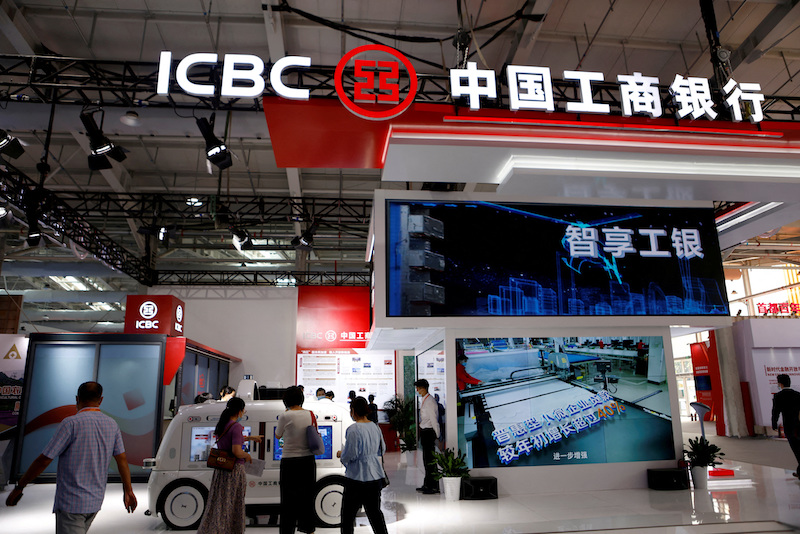Worries about China’s post-Covid recovery have intensified after new Chinese bank loans plunged way more than anticipated in April.
The People’s Bank of China (PBOC) is under increasing pressure to ease policy.
Some moderation in lending had been expected after a record first quarter, but the weak reading came hours after data showed deflationary pressures were deepening in China, and days after news that imports had contracted sharply.
These indicators suggest domestic demand remains frail and more stimulus may be needed.
Chinese banks extended 718.8 billion yuan ($104 billion) in new yuan loans in April, less than a fifth of March’s tally and just over half of the amount expected by analysts, central bank data showed on Thursday.
ALSO SEE:
China Says Willing to Cooperate on Audits With US Officials
Post-Covid recovery fades
Analysts polled by Reuters had forecast new yuan loans would fall to 1.4 trillion yuan in April, versus 3.89 trillion yuan in March, though the total was higher than 645.4 billion yuan a year earlier when the economy was rocked by Covid lockdowns.
“China’s credit data came in well below estimates, reinforcing the concerns over the sustainability of a post-Covid recovery,” said Zhou Hao, economist at Guotai Junan International.
“Both aggregate financing and new loans were only half of the market expectations, suggesting that the first wave of post-Covid recovery has more or less faded.”
After three years of pandemic lockdowns, China’s recovery has been gradual and uneven, with consumption, especially spending on services, faring notably better than the factory, property and export-oriented sectors.
China’s consumer prices rose at the slowest pace in more than two years in April, while factory gate deflation deepened, separate data showed on Thursday, highlighting the broader economy’s struggles to rev-up.
To spur credit growth, the central bank in March cut banks’ reserve requirement ratio (RRR) for the first time this year.
The PBOC also has been guiding bank deposit rates down in recent weeks in a move that could ease burdens on banks from a savings glut, and create some room for the central bank to lower lending rates to spur economic growth, analysts say.
The PBOC, caught between an “atypical deflation” cycle and strong credit growth, has limited room to ease policy, even as anticipation over an end to the Federal Reserve’s interest rate hikes eases fears about capital outflows.
Citi tips 20bps cut to MLF rate
China has already told its banks to reduce the ceiling on interest rates they pay on certain types of deposits.
“Low inflation now and a Fed pivot later are opening the room for further easing. A rate cut also becomes more necessary to support the weak links of recovery and break the ‘confidence trap'”, analysts at Citi said in a note.
“With a more supportive PBoC, we now expect a reduction of 20 bps (basis points) to the MLF rate for rest of this year, our proxy of the policy rate,” it said, referring to the bank’s medium-term loan facility.
The MLF rate is a guide to China’s benchmark lending rate, or loan prime rate (LPR), and will next be set on Monday.
Reflecting growing market bets on policy easing, the yield on the benchmark 10-year government bonds fell below the psychologically important 2.7% level early on Thursday.
But analysts at ING are not expecting a cut, saying it “would be perceived by the market that the economy was not on the path to recovery”, and it would do nothing to revive flagging export demand.
The PBOC has kept the LPR steady since September.
Demand for home, corporate loans sinks
Household loans, mostly mortgages, contracted by 241 billion yuan in April, compared with 1.24 trillion yuan in March, while corporate loans slid to 683.9 billion yuan last month from 2.7 trillion yuan in March.
“The weakness of lending to households – primarily mortgages – tallies with daily data suggesting that the recovery in property sales has at least partially reversed,” Capital Economics said in a note to clients.
“The implication is that credit demand is faltering, which suggests we shouldn’t have high hopes for domestic demand later in the year.”
Broad M2 money supply grew 12.4% in April from a year earlier, central bank data showed, falling short of the Reuters poll estimate of 12.5%. M2 rose 12.7% in March.
Outstanding yuan loans grew 11.8% in April from a year earlier compared with 11.8% growth the previous month. Analysts had predicted 12% growth.
Growth of outstanding total social financing (TSF), a broad measure of credit and liquidity in the economy, was at 10% in April, unchanged from March. TSF includes off-balance sheet forms of financing that exist outside the conventional bank lending system, such as initial public offerings, loans from trust companies and bond sales.
In April, TSF fell to 1.22 trillion yuan from 5.38 trillion yuan in March. Analysts polled by Reuters had expected March TSF of 2 trillion yuan.
- Reuters with additional editing by Jim Pollard
ALSO SEE:
China Inflation Slows, Producer Prices Drop as Demand Slips
China Drops Dollar for Yuan in $88bn Russia Commodity Trade
Nikkei Flat, Hang Seng Dips on China Deflation, US Inflation
Consumer and Factory Prices Drop in China as Demand Sinks
China’s Factory Gate Prices Fall for First Time in Nearly 2 Years
























